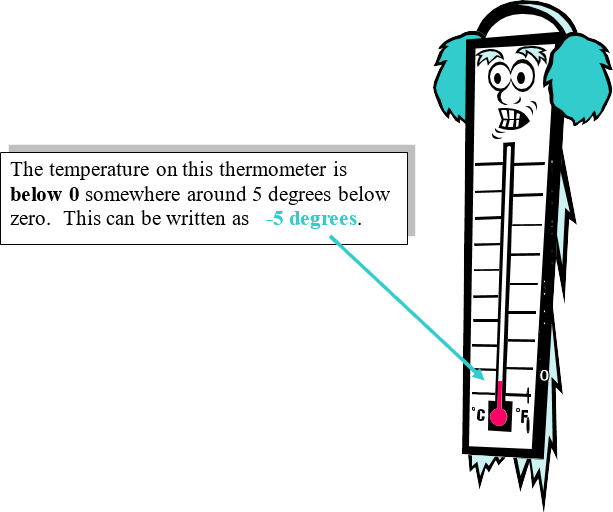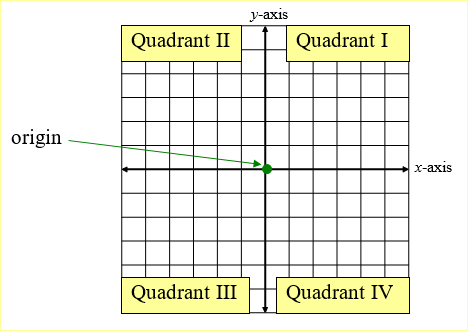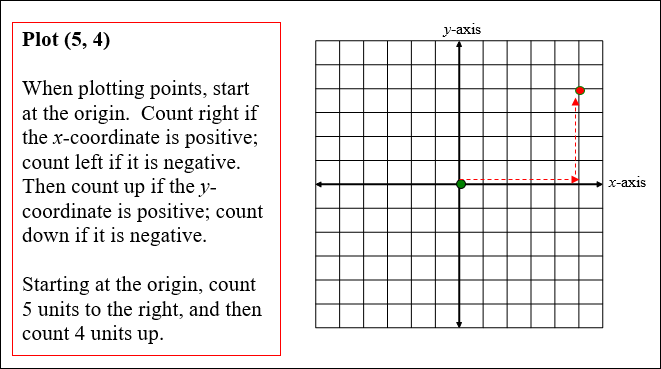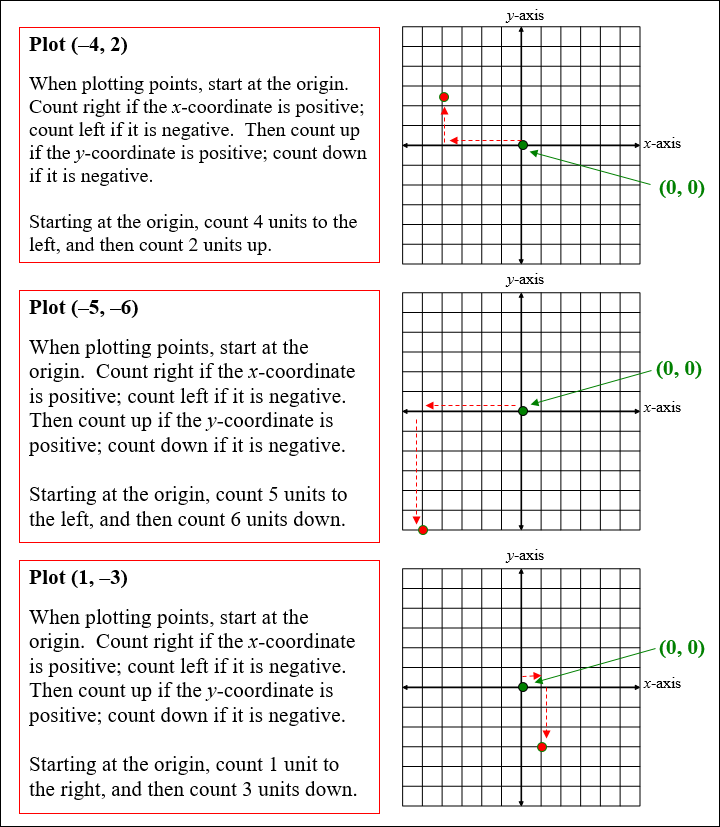Graphing in Quadrant I of the Coordinate Plane In a coordinate plane, points may be located by plotting them. The coordinate plane is divided into four quadrants by the x–axis and the y-axis. The starting point, the origin, is the center, or point where the x and y axis intersect (cross).
A point is designated by both an x-coordinate and a y-coordinate. The origin's coordinates would be (0, 0). The x-coordinate is the first number and the y-coordinate is the second number.
The x-coordinate is how far you count right or left of the origin. The y-coordinate is how far you then count up or down. A point's location is written as an ordered pair (x, y).
|






